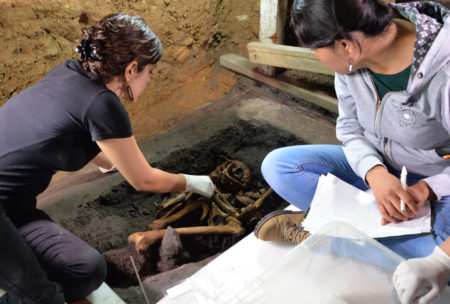Ximena Chávez Balderas wades into the subject of sacrifice among the Mexica people, original inhabitants of what was to become Mexico City, in a book whose premise is that human sacrifice was an irrefutable fact of their culture.
What Chávez does differently in her examination is focus on the hard data obtained after decades of archaeological studies and describe in detail the numbers, the meaning and the techniques employed.
“In essence, and as its etymology indicates, the act of sacrifice means to make something sacred, to turn a human or an animal into a means of communicating with what’s sacred, through their destruction,” Chávez explains in a side note.
Sacrificio humano y tratamientos postsacrificiales en el Templo Mayor de Tenochtitlán (Human sacrifice and post-sacrificial treatments in the Great Temple of Tenochtitlán) is the result of an analysis of 101 decapitated individuals, including two children, whose remains were recovered from 26 different locations at the Templo Mayor, the Great Pyramid of the Mexica capital of Tenochtitlán.
The remains date back to the 15th and early 16th centuries.
The bodies ended up in different parts of the city while the heads were kept in a holy place in Tenochtitlán.
The decapitated remains are few, continued the specialist, because the Great Temple was not conceived as a burial site for all the victims. Only a few of the heads were taken there for specific ceremonies, such as consecrating its dedication or after a new part of the building was completed.
A great majority, 90%, of the skulls studied by Chávez correspond to individuals in their prime, between 15 and 40 years old, most in the 20 to 30-year range.
As for the gender of the sacrificial victims, “most were males, but we also found females and many children.” Chávez remarked that the latter were found mostly on the side of the Great Temple dedicated to Tláloc, the Mexica deity of water and fertility.
Source: mexiconewsdaily.com




